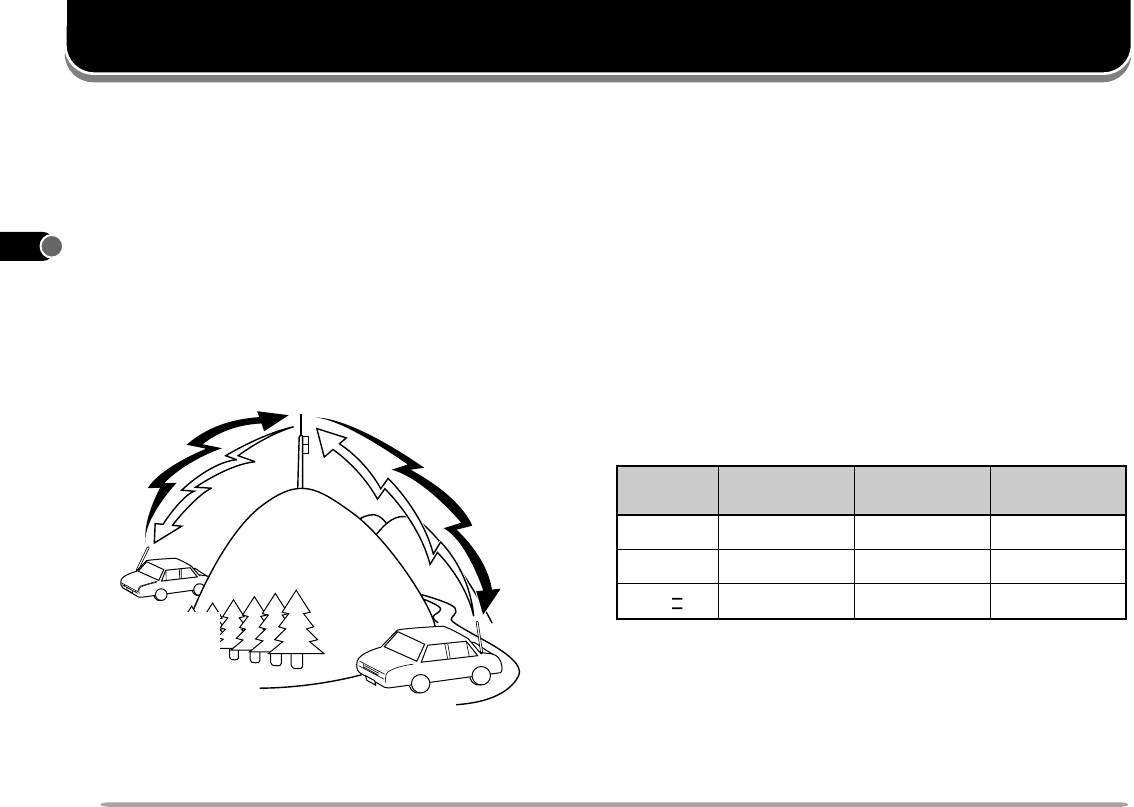
22
1
2
3
4
5
6
7
8
9
10
11
12
13
14
15
16
17
18
19
20
21
OPERATING THROUGH REPEATERS
REPEATER ACCESS
Most Amateur Radio voice repeaters use a separate
receive and transmit frequency. The transmit frequency
may be higher or lower than the receive frequency but the
difference in frequencies will be a standard amount, or
"standard split". You can set a separate receive and
transmit frequency by selecting the offset frequency and
offset direction with respect to the receive frequency.
In addition, some repeaters may require the transceiver to
transmit a tone before the repeater can be used. To
transmit this required tone, activate the Tone function and
select a tone frequency. The required tone frequency
depends on the repeater you are accessing.
Most repeater configurations fall into one of the following
categories:
Compared to simplex communication, you can usually
transmit over much greater distances by using a repeater.
Repeaters are typically located on a mountain top or other
elevated location. Often they operate at higher ERP
(Effective Radiated Power) than a typical station. This
combination of elevation and high ERP allows
communications over considerable distances.
Repeaters are often installed and maintained by radio
clubs, sometimes with the cooperation of local businesses
involved in the communications industry. During
emergencies, repeater networks can be a valuable aid to
officials responsible for coordinating communications in a
community.
N/A: Not applicable
TX: 144.73 MHz
TX tone: 88.5 Hz
RX: 145.33 MHz
TX: 144.73 MHz
TX tone: 88.5 Hz
RX: 145.33 MHz
TM-V7A/ E
VHF
+600 kHz
–600 kHz
N/A
Offset
Direction
+
–
– (" ")
TM-V7E
UHF
+1.6 MHz
–1.6 MHz
–7.6 MHz
TM-V7A
UHF
+5 MHz
–5 MHz
N/A


















